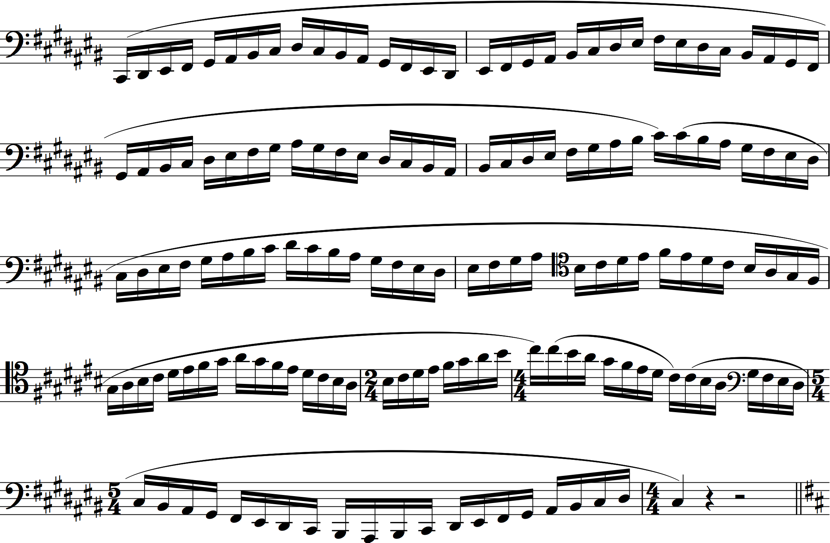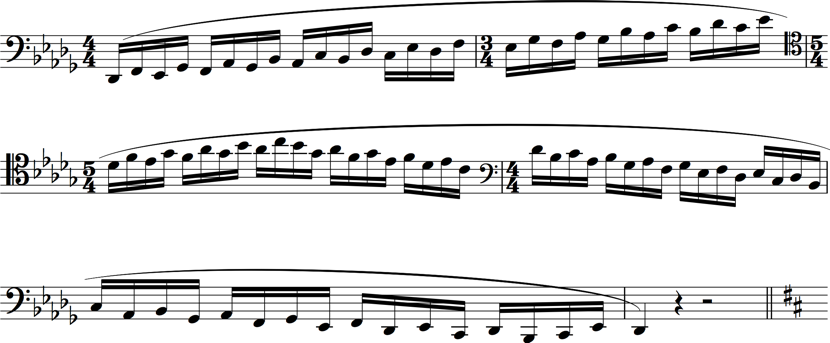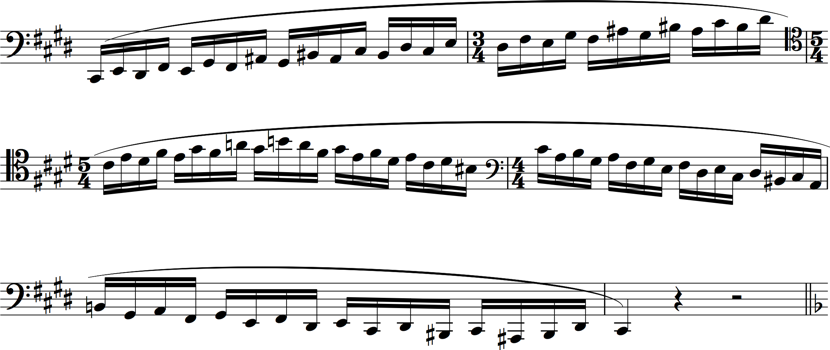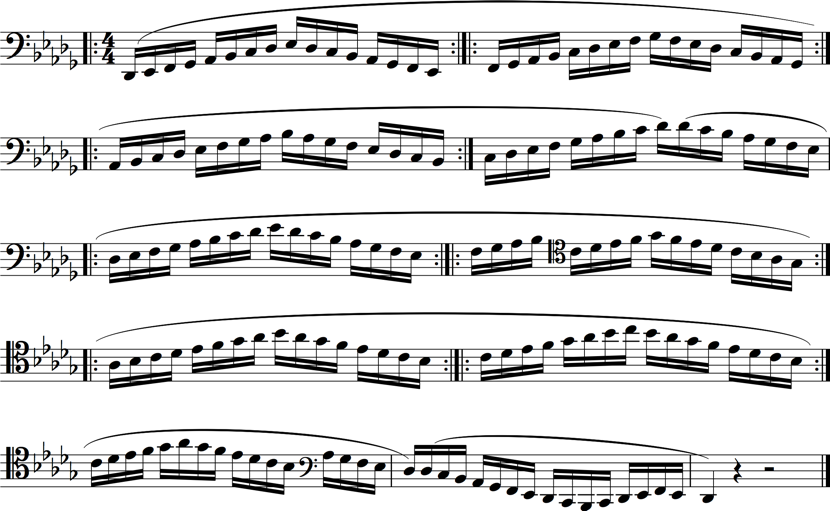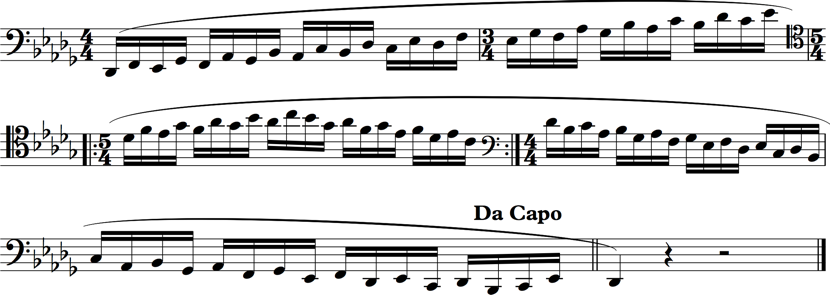Daily Scale Exercises for the Bassoonist
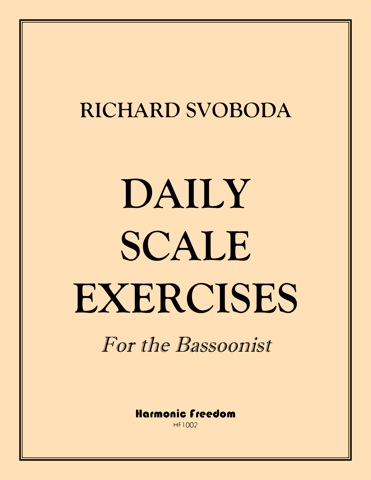 Why another scale studies book??
Why another scale studies book??
I don't know about you, but in the early years of my musical life I thought of scale work as a pretty boring and tedious business and managed to largely avoid it. It wasn't until I was already established in my first orchestra job that I started systematically incorporating scale exercises into my daily routine, mainly as a way to address inadequacies that I saw in my own playing. But I never found a scale exercise book that I liked or could tolerate for any length of time. Some were too long and tedious, others too dry and inherently unmusical. So I just made up my own exercises based on some variation of warm-up scales that I had heard others do. They weren't particularly thorough, but they were enjoyable enough to play, didn't take a day-and-a-half to get through, and most importantly sounded like music.
Years later when I set out to write out my scale routine for my students, I decided to attempt to craft a more thorough and thoughtful version that would still preserve the other qualities that made them fun to play. After myriad attempts and iterations, I arrived at the grouping of exercises that make up my "Daily Scale Exercises for the Bassoonist." Others will be the ultimate judges, but I find that the resulting scale exercises strike an ideal balance between thoroughness and brevity, and are challenging enough to keep one's interest even after years of familiarity. And because life is too short to spend any of it doing mindless acts, these exercises lend themselves quite well to being played musically, with line and shape and direction, which absolutely ramps up the fun quotient and makes them, for me anyway, an enjoyable way to start one's bassoon day.
What's in the book
The book is composed of two essentially similar halves. Both halves contain exercises covering the major scales and the major scales-in-thirds, the minor scales and the minor scales-in-thirds, as well as four chromatic scale exercises. In the first half of the book all of the exercises cover the range from low B-flat to high C, while in the second half the upper range is extended, with the diatonic exercises ascending to high D and the chromatic exercises ascending to high E. The second half also contains more difficult key signatures, for example C# major in place of D-flat major.
Despite their similarities, the two halves of the book seem decidedly different in practice. While both halves are challenging, the first half is relatively more gentle and is more ideally suited as a warm-up, and the second half is quite a bit more treacherous and feels much more like a workout. I felt it necessary to include both as they serve different purposes depending on what one is hoping to accomplish when playing through them.
The scales are also presented in sequence chromatically, starting with the key of B-flat, then B, then C, etc. I believe that, in an ideal world, playing in any key signature should be automatic and that all key signatures should feel equally easy (or difficult!). Interspersing "easy" key signatures with "difficult" ones helps in the realization of both of these aims.
Taking A Closer Look
Below is the D-flat major scale exercise from the first part of the book. You will notice that the exercise covers the entire range from low B-flat to high C. You will also notice that in the upper register the scale reverses direction in successive bars on each of the four highest pitches, G-flat, A-flat, B-flat, and C, giving this particular exercise a fairly complete upper-register workout.
Here is the same scale from the second half of the book, written enharmonically in the key of C# major and ascending to high C#. If you try playing the two scale exercises you will notice that this one is considerably more difficult than the one in D-flat major, partially owing to the changed key signature as well as to the extended upper range. Unfortunately we are called upon to play in the key of C# major from time to time, so one needs to know this key as well as any other.
Just so you can check out more of what's inside, here's the C# minor exercise from the first part of the book,
and here's the corresponding D-flat major scale-in-thirds,
and C# minor scale-in-thirds,
and a portion of one of the chromatic exercises.
Practice strategies
You may have noticed that, for woodshedding purposes, many of the measures in the scale exercises can be repeated ad infinitum. I could have just as easily written the D-flat major exercise the following way, with optional repeats. Repeating bars as a practice strategy can be especially helpful in the gnarly extreme registers.
It is an easy matter to modify the scales-in-thirds exercises to concentrate on the problematic upper register, and it is likewise a nice variation to play these entire exercises repeated. To reflect these possibilities, I might have written the D-flat major exercise like this.
It should also be noted that all of these exercises can be worked through with rhythms, like so,
and like so.
or with any other variation you might desire. It is essential to work through all technical issues during the learning process before using these scales as a warm-up, because warming up with your scales, if played with uneven fingers or mistakes, will only reinforce those flaws. That said, pretty much no one is going to be able to play through these exercises flawlessly every time, so it's important to play them mindfully so that you can go back over sections that are in need of some TLC.
Take it for a spin!
I hope that this has piqued your curiosity and that you'd like to give my system of daily scale exercises a try. I have prepared the Major Scale Exercise Ascending to C (the complete first exercise in my book) in a version for downloading and subsequent copying. Depending on your level of ability, these six pages could potentially keep you occupied for quite a while!
To access the free download, CLICK HERE.
If you like it, feel free to copy it and share it with others. If you really like it (and I hope you will!) you can order the complete set of exercises from the following retailers:

